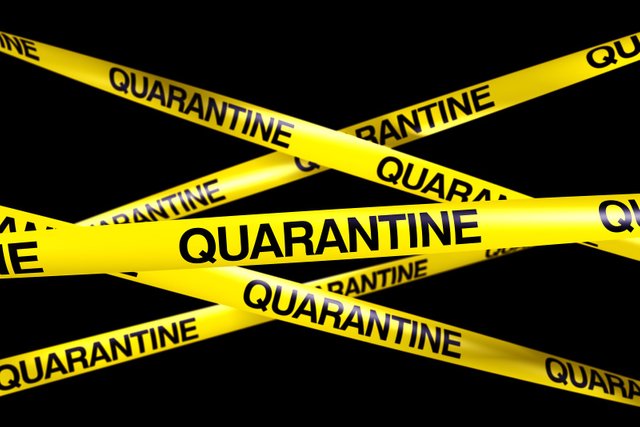MICROBIOLOGY: CONTROL OF VIRAL INFECTIONS.

Image source
Viruses are small obligate intracellular parasites which are considered non-living and can only replicate inside a susceptible host. Viruses cause a variety of diseases in animals, including humans, ranging from the common cold to potentially fatal illnesses like meningitis and HIV. Because of the enormous variations in viruses and in their epidemiology and pathogenesis, there is no single, magic-bullet approach to control. Each virus presents its own set of problems. Over the years, Scientists have devised ways to control viral infections.
Immunoprophylaxis
Immunoprophylaxis is the prevention of a disease by the production of active or passive immunity.
Active immunization/ Active prophylaxis (vaccines)
It involves the administration of a vaccine to an individual so that the person’s own immune system mounts a response against that vaccine. The goal of active immunization is to elicit protective immunity and immunologic memory for heightened immune response upon re-exposure. Active immunization can be achieved through natural infection with a microorganism or artificially by a vaccine. In active immunization, there is proliferation of antigen reactive T & B cells resulting in the formation of memory cells. Vaccines stimulate B lymphocytes leading to the production of antibodies and memory B cells. Vaccines also stimulate T cells leading to cell-mediated responses such as apoptosis of infected cells and production of memory T cells. There are several types of vaccines such as live/ attenuated vaccines, killed/ inactivated vaccine, recombinant vaccines, toxoids, peptide vaccines and DNA vaccines. Different vaccines have different efficacies, different type of immunity induced (either B or T cell or both), different magnitude and duration of immunity, different methods of preparation, etc. Depending on the nature of the virus, its clinical importance, machines and equipments available different types of vaccines can be developed.
Passive immunization/ Passive prophylaxis
Individual acquires immunity through the transfer of antibodies formed by an immune individual or animal. Passive immunization does not activate T or B cells and as such no memory cells are produced to fight the virus when it re-exposes itself. Passive immunization can be natural or artificial. Natural passive immunization includes transplacental transfer of maternal antibodies to the fetus or transfer of maternal antibodies in colostrum to a newborn. In artificial passive immunization, preformed antibodies or antiserum is obtained from an individual who has been vaccinated against a specific virus. The antibodies or antisera is then administered to another individual. Passive immunoprophylaxis is most often recommended in one of these situations: (1) when exposure has occurred, or is expected to occur very soon, and time does not allow for vaccination and the development of an adequate post-vaccination immune response; (2) when no effective vaccine exists; (3) when an underlying illness precludes a satisfactory response to vaccination – an immunocompromised state.
Antiviral Chemotherapy
Antiviral chemotherapeutic agents can be divided into three categories: virucidal agents, antiviral agents, and immunomodulators. Virucidal agents directly inactivate intact viruses. Antiviral agents inhibit viral replication at the cellular level, interrupting one or more steps in the life cycle of the virus. These agents have a limited spectrum of activity and, because most of them also interrupt host cell function, they are toxic to various degrees. The emergence of drug resistant viruses may occur during clinical use that further limits the effectiveness of various antivirals. Immunomodulators such as interferons (a cytokine with antiviral activity) protect the host by altering the host immune responses to infection.
Hygiene and Sanitation
Keeping a good personal hygiene and a very tidy and kept environment reduces the incidence of faecal-oral viral infections such as infection with hepatitis A and E viruses. Also to reduce nosocomial infections, health centres (hospitals and clinics) should be designed for easy disinfection, with wash-down walls and floors. Hospitals should also have efficient ventilation and air conditioning, not only to minimize odors, but also to reduce the aerosol transmission of viruses. Frequent hand washing and decontamination (disinfection and sterilization) of contaminated equipments are essential. Intensive animal husbandry leads to accumulation in the local environment of faeces, urine, hair, feathers, and so on, that may be contaminated with viruses; this is especially problematic with viruses that are resistant to environmental desiccation. To avoid this, intensive livestock units operate an “all in, all out” management system, by which the animal houses are emptied, cleaned, and disinfected between cohorts of animals.
Arthropod Vector Control
To reduce incidence of arbovirus infections such as dengue fever, yellow fever, encephalitis, amongst others, control of the arthropod vector is prominent. Some of these control measures include draining swamps, applying insecticide, screening homes, and using insect repellent or protective clothing to kill or reduce animal and human contact with arthropods such as mosquitoes, ticks and sandflies.
Quarantine and Import control
It involves the separation of infected persons or animals with signs suspicious of a viral infection. A period of quarantine, with or without specific testing, is usually a requirement for the importation of animals from another country, and similar requirements may be enforced within a country or region for the control or eradication of specific infectious agents. A very clear example was the outbreak of Ebola virus in some parts of West Africa such as Guinea, Liberia and Sierra Leone in 2014; quarantine of infected animals and humans chalked a great success to its eradication. Import control involves blocking animal imports from a country such as one with foot and mouth disease virus (FMDV) or Avian influenza.

Image source
Slaughter and burning of infected animals
Culling the infected animal or herd. Viruses require living cells to multiple and this is halted by the death of the infected animal. Burning (heat) inactivates the viruses.
Notification
Notifying the authorities in cases of suspected virus outbreaks.

Fight against viral replication.
An impressive and informative work.
Good one.
Posted using Partiko Android
Thanks for passing by @dklasic. I wish to be the mouthpiece of medicine on this platform
Posted using Partiko Android
Cool.
I'd join you if need be.
Am a potential medical laboratory scientist.
Posted using Partiko Android
Great!
To listen to the audio version of this article click on the play image.

Brought to you by @tts. If you find it useful please consider upvoting this reply.
Congratulations! This post has been upvoted from the communal account, @minnowsupport, by lexymaine from the Minnow Support Project. It's a witness project run by aggroed, ausbitbank, teamsteem, someguy123, neoxian, followbtcnews, and netuoso. The goal is to help Steemit grow by supporting Minnows. Please find us at the Peace, Abundance, and Liberty Network (PALnet) Discord Channel. It's a completely public and open space to all members of the Steemit community who voluntarily choose to be there.
If you would like to delegate to the Minnow Support Project you can do so by clicking on the following links: 50SP, 100SP, 250SP, 500SP, 1000SP, 5000SP.
Be sure to leave at least 50SP undelegated on your account.
Congratulations,
you just received a 14.14% upvote from @steemhq - Community Bot!
Wanna join and receive free upvotes yourself?

Vote for
steemhq.witnesson Steemit or directly on SteemConnect and join the Community Witness.This service was brought to you by SteemHQ.com
Hi, @lexymaine!
You just got a 0.81% upvote from SteemPlus!
To get higher upvotes, earn more SteemPlus Points (SPP). On your Steemit wallet, check your SPP balance and click on "How to earn SPP?" to find out all the ways to earn.
If you're not using SteemPlus yet, please check our last posts in here to see the many ways in which SteemPlus can improve your Steem experience on Steemit and Busy.
Congratulations @lexymaine! You have completed the following achievement on the Steem blockchain and have been rewarded with new badge(s) :
Click here to view your Board of Honor
If you no longer want to receive notifications, reply to this comment with the word
STOPDo not miss the last post from @steemitboard: